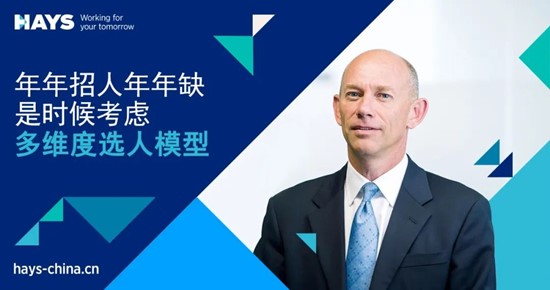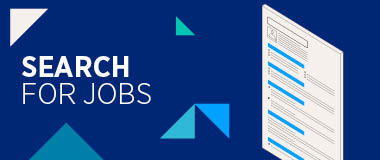Why you need to stop playing it safe when it comes to hiring

A McKinsey study from 2022 revealed that 87% of senior executives felt their organisation wasn’t in the right position to hire for digital skills confidently. Throw in the astonishing advancement and disruptive impact of artificial intelligence (AI), and suddenly the employment landscape looks very different to how it did just six months ago.
As a result, hiring managers and business leaders need to re-evaluate their acquisition practices and break free from the traditional mould. It is no longer enough to replace an outgoing employee with a like-for-like replacement. We need to start thinking about how we want our teams to look in three, four, even five years’ time, but of course there’s no crystal ball to accurately predict that future.
Hence, I think it’s time to start planning for the broader skills we need to hire for, that we may not even know about now, but will enable our agility going forward.
Why you should hire for will, not skill
If we’re going to take a sustainable approach to building the workforce, judging potential employees based solely on their current skillset won’t work. I fully understand the temptation to align your hiring strategy with the skills gaps you’re seeing in your organisation. However, it’s likely you’ll find yourself facing similar challenges in just a few years’ time, as well as failing to address issues you might not have even considered.
You will never break out of this vicious circle. Here’s why.
A shortage of skills
It can often feel as though the conversation on skills gaps never ends. Talent shortages will continue to ebb and flow in their severity, but the fact remains that we are short on skills.
Among OECD member countries, the unemployment rate currently sits at 5.17%, and is estimated to rise to 5.51% by 2024. That is a significant pool of untapped talent that are looking for opportunities in the world of work, but perhaps don’t have the perfect skills or resources.
Harnessing the potential within this group can go some way to bridging the skills gap, but employers who don’t have a coherent strategy will struggle to implement this on the scale that is possible. Unlocking these talent networks will require organisations to consider how they can appeal to prospective workers, as well as how they can transform their will into skill.
Do you know where the gaps in your organisation lie, and the profiles that can fill them? Is your employer brand going to attract the right people with potential, and do you even know where to go looking for them?
This is a common topic of conversation with many of our clients who struggle in these areas, which is why we’ve decided to empower them with solutions through our Talent Advisory Services.
From Talent Planning to Assessments, Acquisition and Development, our new service is part of our truly end-to-end offering that helps you take on the challenges of today, whilst working for your tomorrow. We strongly believe that all businesses need to become Talent Creators, not just Talent Consumers, and our new services are designed to help facilitate that shift.
The unrelenting pace of innovation
As discussed in a recent report from our Hays Enterprise Solutions business, the World Economic Forum expects a third of the global workforce to require reskilling by 2030. Assuming that the average “half-life” for skills of five years is likely halved when it comes to technical skills, it’s plausible that some workers will need to reskill more than once before that date. In fact, the rapid rate of technological advancement almost guarantees it.
It’s not just technical skills that will be required to keep pace with this, though. The talking point of 2023 so far has been artificial intelligence and the capabilities of tools such as ChatGPT and Mid journey. I’ve recently written about the opportunities this will bring, and how leaders have a responsibility to consider the impact on their people.
The fundamental advantage of large language models such as ChatGPT is that they are no longer exclusive to “techies” - everybody can use them. This means that your workforce will need to develop their soft skills (or, as I prefer to call them, “human” skills) to complement emerging technologies.
We cannot reliably predict where innovation will take us by 2030, nor the skills that will be required to use the latest technologies. So isn’t it restrictive to simply hire people for the capabilities they have now?
Planning for the future
If you’re reading this and thinking that your workforce doesn’t boast the right skills, you’re not alone. Many organisations we work with are understandably struggling to define which skills are needed for success. As part of our purpose of Working for your tomorrow, we’re supporting our clients in identifying the gaps they have in skills through our Advisory Services offering.
It’s not only skills that will evolve in the future. As I discussed in this piece on the ways in which the pandemic has changed recruitment, a job description is defined by the skills required. My advice since then has not changed: when writing the specifications of a job role, start with the emerging and evolving skills and bring this to your recruiter. We can’t predict exactly what existing roles will look like in five years’ time, or which ones will have become vital for your organisation.
But we can look for those people with the right attributes and approach to have the will to keep up to date and learn.
As such, hiring for will over skill is, ultimately, a sustainable solution. In doing so, you’re bringing onboard agile employees who can help navigate the constantly changing world of work, and avoiding rehiring for new skills and roles that may well not even exist right now.
The focus on skills is limiting your organisation
I hope that my thoughts here have demonstrated just how restrictive it can be to base your recruitment strategy solely on a candidate’s skillset. In doing so, you risk missing out on people who can offer fresh perspectives and overlooked attributes while, ultimately, leaving your organisation ill-prepared for future trends and technologies.
The pool of “unicorn” candidates (i.e. those with the exact skills and experience you’re looking for) is growing smaller by the day – and jobseekers know it. A recent poll from Hays on LinkedIn revealed that 81% of the near 46,000 respondents would apply for a role despite knowing full well they did not meet the full requirements of the job specification.
If anything, rather than focusing on skills, we should look for talent that can demonstrate the all-important learning mindset – that is, the attitude and ability to develop their skillset in line with emerging trends. Making a commitment to take a chance on this talent can enable us to make great strides in closing the skills gap.
In my next blog, I’ll be outlining just how organisations of all sizes can implement this approach into their recruitment and development strategies. Until then, I'd like to know whether the points I’ve raised here have resonated with you. Join the conversation in the comments section below.

Job search
Looking for a new role? search here for your ideal job or get in touch with one of our expert consultants
